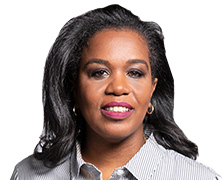How Strong Role Models Help Us Break Barriers
“You can’t be what you can’t see,” is a popular phrase expressed by many and attributed to Marian Wright Edelman, an American civil rights activist and founder of the Children’s Defense Fund. This expression has always resonated with me, as I feel it exemplifies the need for powerful role models.
My mother is the leading female inspiration in my life and the person who taught me to believe in myself, be excellent in what I attempt, and seek lessons in failures. While these words were shared in my personal life, I apply them professionally every day.
I’ve always found that female role models help shift the paradigm for underrepresented groups, who may be unsure or hesitant to explore career paths because they don’t see many people that look like them in a particular field or industry. As I work to embed best practices across recruiting, employee development, and business processes at Xandr, the role female leaders play in creating collaborative teams is becoming more evident.
While I’ve made this observation in my own experience, it’s also backed by research from McKinsey, which found that there is a statistically significant correlation between a more diverse leadership team and financial outperformance. According to their research, companies in the top quartile for gender diversity on their executive teams were 21 percent more likely to have above-average profitability than companies in the fourth quartile.
McKinsey’s findings support the idea that we need female role models. Going back to Marian’s quote, new generations need to see women in leadership roles—tangible proof that anything is possible. Over the course of my career, these role models have not been difficult to identify. However, I have had to get creative in how I have sought them out. Beyond the walls of corporate hierarchy, I have found female role models in my family (my mom), in history (Sojourner Truth), and among peers.
As a female leader, I make it a priority to think about the impact each of these women have had on me and always consider their actions and thought processes when approaching challenging decisions or tasks. Perhaps the most important lesson learned from my mother is that I have the power to break barriers. This mentality has led me to where I am today, and it’s something I hope to instill in other women during, and beyond, the span of my career.







